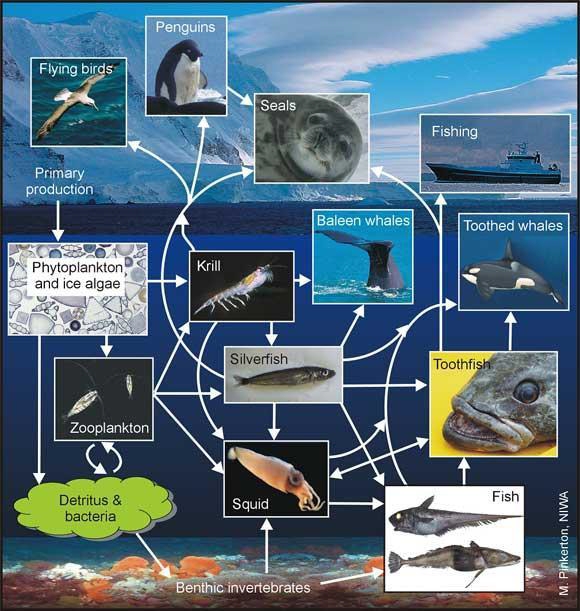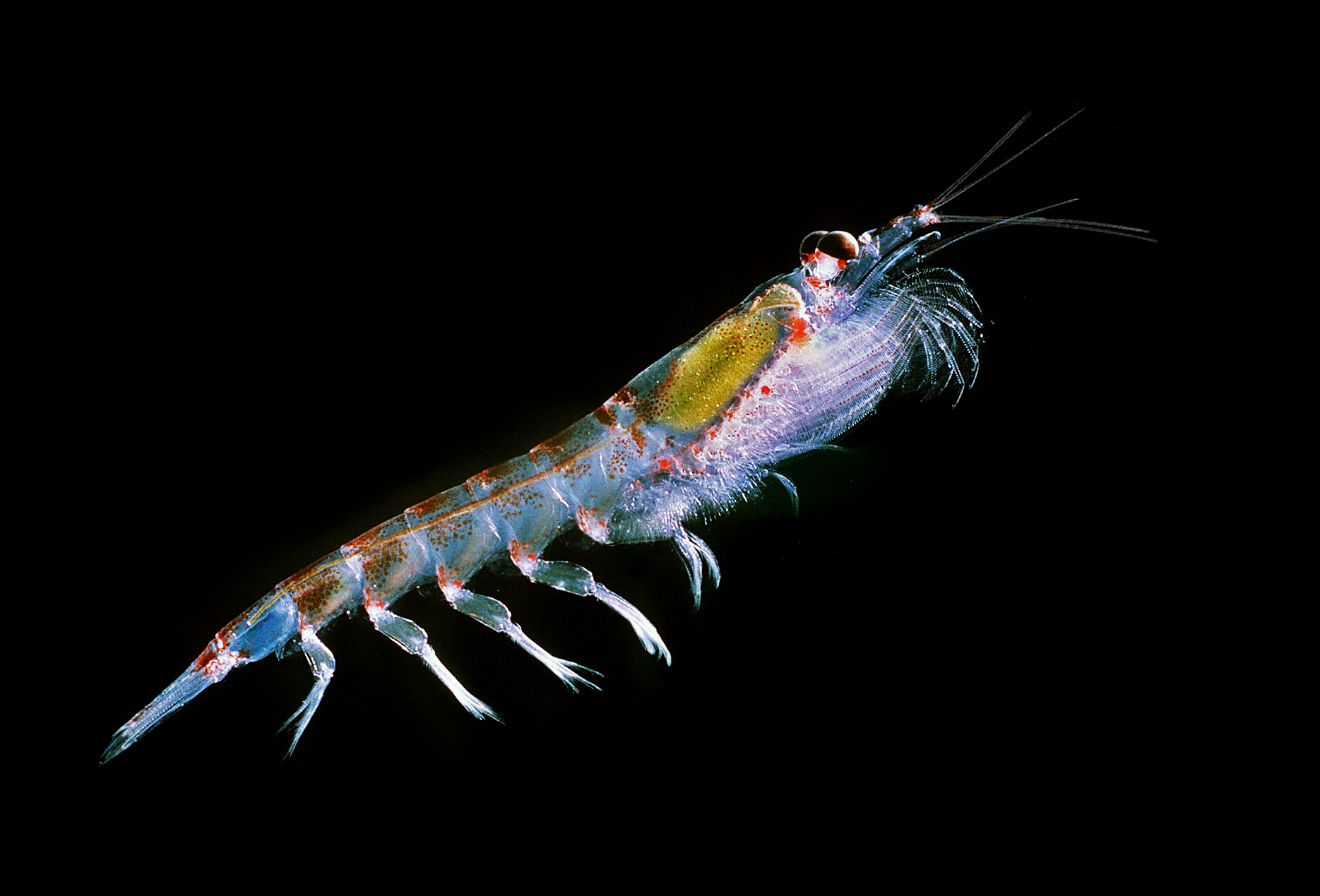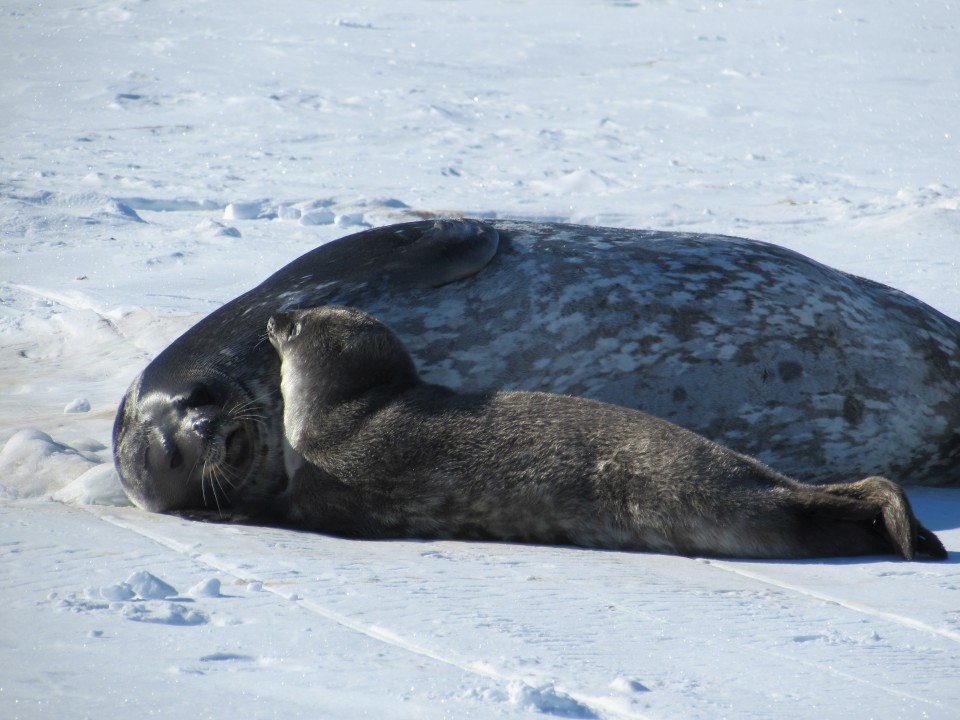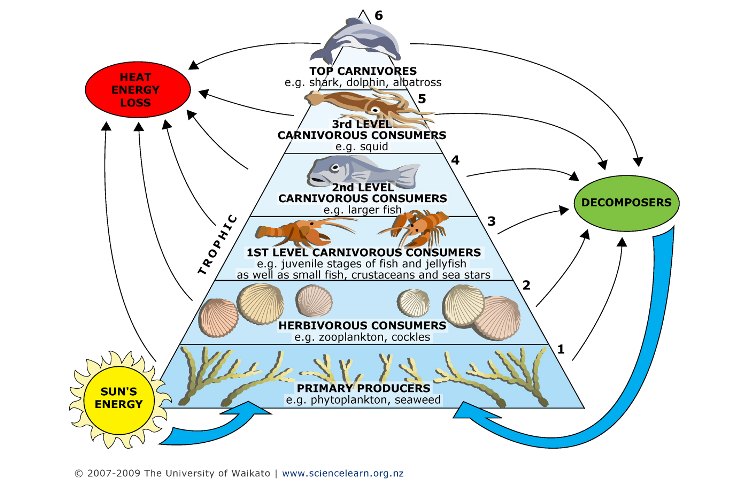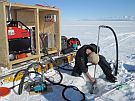Antarctica supports a wide range of organisms from algae to large animals. All these organisms are interconnected within a food web and rely on each other for survival.
A wide range of plants and animals live in Antarctica. All these plants and animals rely on each other to survive and together make up a food web.
Even though the coastal waters of Antarctica are cold and often covered with ice, the sea supports a large number of different species from algae to invertebrates to larger vertebrates such as fish, penguins, seals and whales.
Food webs
A food web shows the feeding relationships between the organisms in a particular ecosystem, basically what eats what. It shows how energy flows through the ecosystem. Organisms can be divided into producers, consumers and decomposers within a food web:
- producers - green plants - they make their food using the Sun's energy in a process called photosynthesis
- consumers - usually animals - they must eat other organisms as their food source
- decomposers - they break down dead organisms to use as their food source, for example, bacteria
The Antarctic ecosystem is unique in that the food chains are very short and often based on the availability of krill, which is vital for all animal life forms living in Antarctica.
Producers
Producers in the Antarctic marine ecosystem are:
- sea ice algae - which live on the underside of the sea ice but may fall to the sea floor
- phytoplankton - which may be carried under the sea ice by currents from open water regions
- macroalgae - leafy seaweeds and algae that are attached to rocks and corals on the sea floor
- microalgae - microscopic algae that lives on the surface of sea floor sediments.
Consumers
The producers form an important food source for animals which feed by grazing or filter feeding. Examples include snails, urchins and corals. These consumers in turn will be eaten by other animals such as sea-stars. At the top of the food web there are larger consumers such as fish, penguins and seals.
Decomposers
This group of organisms break down dead plants and animals as a food source, releasing nutrients back into the ecosystem. Bacteria are an example of decomposers in a marine ecosystem.
If some animals die due to climate change and reduced sea ice, it will affect all animals in the food web.
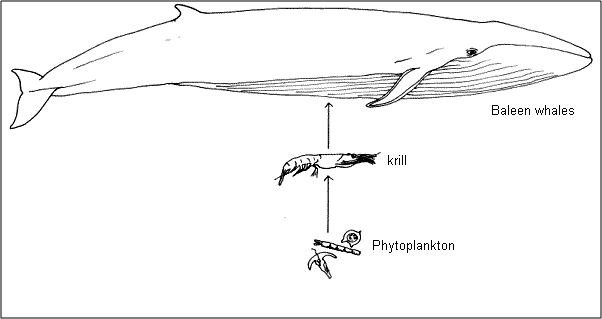
A simple Antarctic food chain.
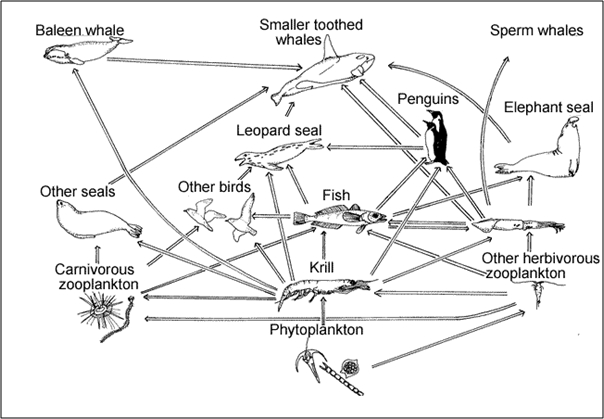
An Antarctic food web.
Ready for a quiz? Try the 'Antarctic Food Webs' interactive activity.
Even though the water around Antarctica is very cold and often covered with ice, the sea supports a large number of different species from algae to invertebrates to larger vertebrates such as fish, penguins and seals.
Food webs
A food web shows what eats what. It shows how energy flows through the ecosystem. Organisms can be divided into producers, consumers and decomposers within a food web:
Producers
Producers in the Antarctic Ocean ecosystem are:
- sea ice algae - which live on the underside of the sea ice but may fall to the sea floor
- phytoplankton - which may be carried under the sea ice by currents from open water regions
- macroalgae - leafy seaweeds and algae that are attached to rocks and corals on the sea floor
- microalgae - microscopic algae that lives on the surface of sea floor sediments
Consumers
The plants (producers) are needed by consumers who feed by grazing or filter feeding. Examples include snails, urchins and corals. These consumers in turn will be eaten by other animals such as sea-stars.
At the top of the food web there are larger animals (consumers) such as fish, penguins, seals and whales.
Decomposers
This group of living things break down dead plants and animals for food, releasing nutrients back into the ecosystem. Bacteria are an example of decomposers in a marine ecosystem.
If some animals die due to melting sea ice, it will affect all animals in the food web.

A simple Antarctic food chain.

An Antarctic food web.
Ready for a quiz? Try the 'Antarctic Food Webs' interactive activity.
Do you think all plants and animals in the Antarctic Ocean will be affected by climate change? Find evidence to support your answer.
Do you think all plants and animals in the Antarctic Ocean will be affected by climate change? Find evidence to support your answer.



